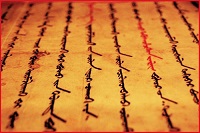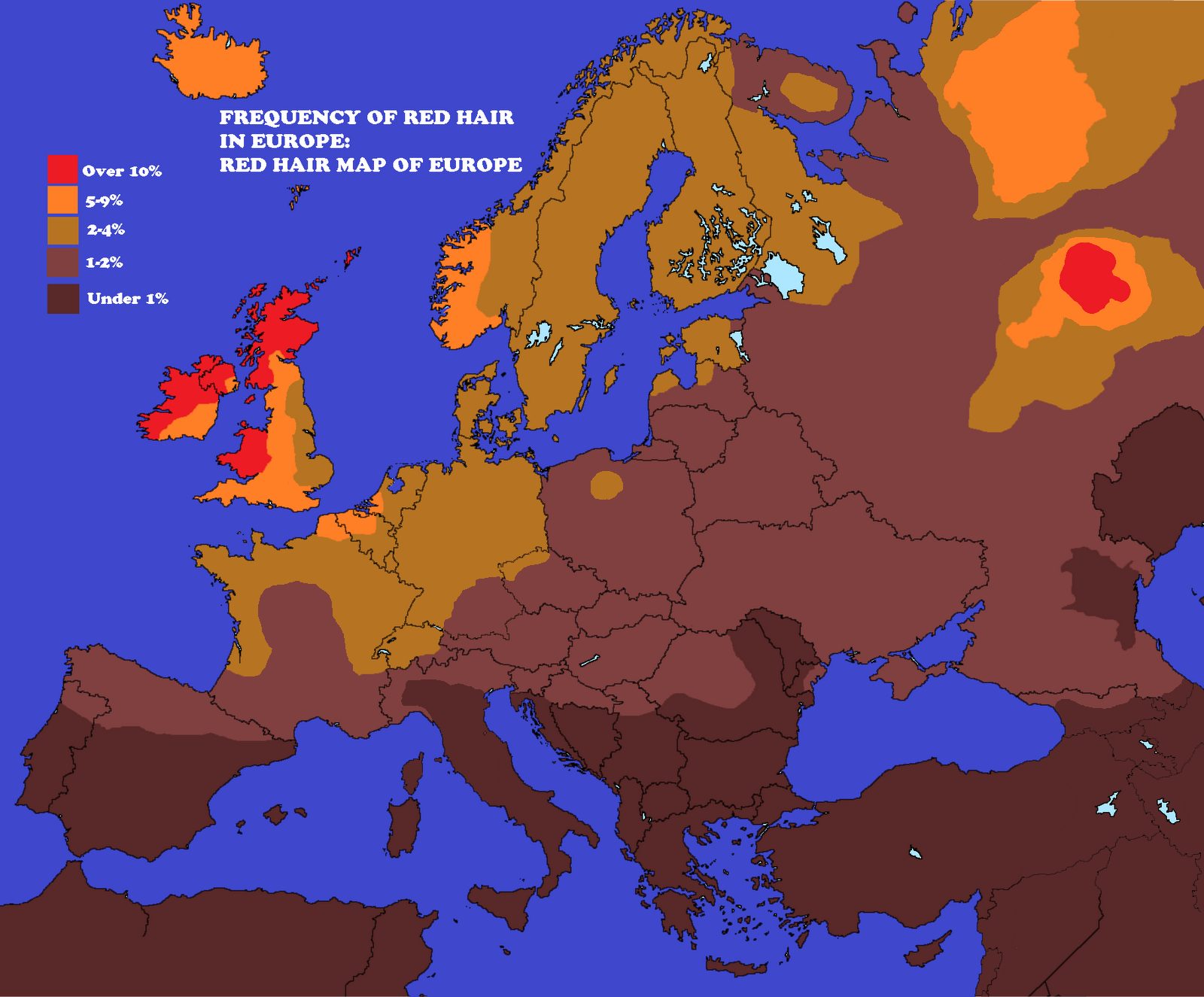0



















| Thumbs Up |
| Received: 646 Given: 214 |

Roughly speaking, the official line of the Kyrgyz Republic is that there was a mass migration of Yenisei Kyrgyz to modern day Kyrgyzstan some time after the Yenisei Kyrgyz overran the Uighur Khaganate. Common Y-DNA descent (r1a-z93) is presented as proof of not only supposed cultural link but also genetic one between modern Kyrgyz and Altai/Khakas populations. However Kyrgyz are predominantly R1a1a1b2a, and Altai people are R1a1a1b2.
"In the complementary R1a-Z93 haplogroup, the paragroup R1a-Z93* is most common (>30%) in the South Siberian Altai region of Russia, but it also occurs in Kyrgyzstan (6%) and in all Iranian populations (1–8%). R1a-Z2125 occurs at highest frequencies in Kyrgyzstan and in Afghan Pashtuns (>40%)."
Peter A Underhill European Journal of Human Genetics 23, 124–131 (2015) https://www.nature.com/articles/ejhg201450#f3
I did not find any information on the approximate date of subclade separation. Any thoughts?
It seems that in all cases clinical distribution emerges out of the mountains (Altai, Kyrgyzstan, Tajikistan, Afghanistan) and that high frequency of Kyrgyz r1a (more than 60% according to some studies) comes from remnants of Indo-european Scythians whose Y-DNA survived in mountainous areas during proto-Turkic and Mongol expansions. Kyrgyz are apparently linked to Pashtuns and Tajiks who also live in the mountains to the south and not to Siberian founder effect subgroup. But the main question is when did the two subgroups separate?
Last edited by Yaglakar; 01-10-2018 at 08:12 AM.
















| Thumbs Up |
| Received: 8,913 Given: 2,962 |

Yenisei region was predominantly if not exclusively Europid, old cultures from there were examined and found to be light haired and eyed caucasoids with R1a Y-DNA. When people from there were first recorded by Chinese, they were described red headed blue eyed but speaking a Turkic language (Yenisei Krygyzs). Yenisei Kyrgyzs linked their ancestry to Li Ling. Li Ling was a Chinese general who was defeated and imprisoned by Xiognu, but was later freed and became a Xiognu general. It was told that the black haired Yenisei Krygyzs were descendants of Li Ling. It might be speculated that at some point some Xiognu invaders conquered Yenisei inhabitants, which Li Ling might have been leading, and founded a Khaganate there, the inhabitants later adopted the Turkic language. Other option is that Turkic Xiognu and Yenisei clans found a confederation, Turkic language became dominant in that confederation.

















| Thumbs Up |
| Received: 646 Given: 214 |

Chinese sources say that Yenisei Kyrgyz spoke a similar language to that of Uighurs ie Turkic. Sources in regards to appearance cannot be trusted. Yenisei were probably slightly more Caucasoid than old Uyghurs. But Chinese sources exaggerated certain characteristics and forged legends like that of Kyrgyz descending from a Chinese general (which is obviously a sun tzu tactic in practice). A modern Uyghur or even Kazakh travelling in rural China will in many cases be visually perceived as a 'European', but if these same travelers end up in Europe they will be perceived as 'Asians'. But the question is of genetic link between modern Kyrgyz and Altai/Khakas peoples.


















| Thumbs Up |
| Received: 2,797 Given: 2,465 |

All I know about it is that Khakas people are the modern descendant of Yenisei Kyrgyz people














| Thumbs Up |
| Received: 3,722 Given: 1,300 |

Old Kırgız were Turkic. They weren't full Europids, part Mongoloid too.
Modern scholars, incl. western Turkologists dropped past century's brain masturbations.
Pretending Kyrgyz weren't Turks is like the nutt claim that Attila was Germanic etc.
These claims have no scientifical counterpart.
''A number of researchers have been tempted to see the early Kyrgyz as a non-Turkic people or, at the very least, an ethnically mixed people with a large non-Turkic component. Many scholars have supported this idea after identifying what they believe to be examples of non-Turkic (particularly Samoyed) words among the Kyrgyz words preserved in Chinese sources. It should be noted, however, that the connection between language and "race" is highly inconclusive. The physical appearance of the Kyrgyz can no more be considered as indicating that they were not a Turkic people than can the lexical appearance of a few possibly non-Turkic words, whose presence in the Kyrgyz language can be explained through the common practice of linguistic borrowing. The Kyrgyz inscriptions of the Yenisei (eighth century CE and later) are in fact written in a completely Turkic language, and T'ang Chinese sources state clearly that the Kyrgyz written and spoken language at that time was identical to that of the Turkic Uygurs (Chinese Hui-ho, Hui-hu). Most of the Kyrgyz words preserved in Chinese sources are, in fact, Turkic. There is no reason to assume a non-Turkic origin for the Kyrgyz, although that possibility cannot be discounted.''
Michael Drompp (US Turkologist)

















| Thumbs Up |
| Received: 646 Given: 214 |

Well it is certain that Yenisei Kyrgyz Y-DNA was overwhelmingly R1A, but it doesn't mean they looked Caucasoid. Just look at modern day Kyrgyz whose R1A by some estimates is 68% but they still look largely mongoloid. Isolated Altaic R1A version survived because Indo-European Scythians hid in Altai mountains during proto-Turkic expansion, the ones that were on the plains got incorporated into expanding proto-Turks and their Y-DNA is represented in smaller percentages in neighboring Turkic populations today. Minusinsk Hollow (close to Altai) where the Yenisei Kyrgyz lived is quite a special place. It is separated geographically from Mongolia by rivers and valleys. Any ancient military expedition leading to Minusinsk Hollow had to be conducted in winter when the many rivers and estuaries froze, but then the problem would have been that of feeding horses during winter. It is due to geographic obstacles that R1A is repressed in such high numbers there.













| Thumbs Up |
| Received: 2,314 Given: 71 |

This chart here is wrong
R1a is low on southern Kyrgyz but high in northern kyrgyz. Some Kyrgyz groups have only 40% R1a
They need sort out highland Kyrgyz and lowland kyrgyz. Just like their Y-DNA is different so is their West Eurasian mtDNA depending on the Kyrgyz it's 20% in highland to 50% in lowland Kyrgyz
" The genetic makeup of the Kyrgyz is consistent with their origin as a mix of tribes.[30][31] For instance, 63% of modern Kyrgyz men of Jumgal District[32] share Haplogroup R1a1 (Y-DNA) with Ishkashimis (68%),[30] Tajiks of Panjikent (64%),[33][34] Pashtuns (51%),[35] and Bartangis (40%).[30][36] Low diversity of Kyrgyz R1a1 indicates a founder effect within the historical period.[33] Other groups of Kyrgyz show considerably lower haplogroup R frequencies and almost lack haplogroup N.[37] "
West Eurasian mtDNA ranges from 27% to 42.6% in the Kyrgyz[38] with Haplogroup mtDNA H being the most predominant marker at 21.3% among the Kyrgyz.[38]
Kyrgyz may have 40-70% R1a ( depending on the Kyrgyz tribes, some Kyrgyz actually have very low R1a despite several studies show them with high )
Kyrgyz are genetically diverse haplogroup and autosomally so it's hard to say. With two Kyrgyz group being 62.5% East Eurasian, one group being 67.5% East Eurasian, one group is 56% and two are 50% ( Btw the Kyrgyz with only 50% in western Kyrgyzstan historically belong to a Tajikistan area and they properly mixed with the Tajiks there, that's why the Kyrgyz in Tajikistan are also the same only after the Soviets helped Tajiks gained back half of it's area back )
The Tajiks and the Tajiks in Uzbeks are also roughly genetically the same
( Yellow dots are Turkic, Greek dots are Iranian Tajiks and Uzbeksized Tajiks)
Even the Kyrgyz groups from this area are 70-80% East Eurasian and we don't know the genetic make up of these people.














| Thumbs Up |
| Received: 2,314 Given: 71 |

The R1a Kyrgyz, Altai have predate any Proto-Turkic and Mongol. It even started out in Iranian and Uralic cultures more than thousands years before Mongol expanded and 500 years before Turkic expansion into central Asia. I wish people would understand this already. The formation of this haplogroups in Turkic may have even existed before the Scythian times. It's stupid to talk about if their R1a is Scythian or not ? I mean what's the point.... Indians had R1a since 8000 years ago but any R1a from India would be spread by Indian race. In Central Asia they would have look Mongoloid/or part Mongoloid even thousand years before any Mongol or Turkic invasion.
It's so irrelevant to talk about their Y-DNA heritage at this point.
The Kyrgyz and Altay haplogroup more similarity with the Pazyryk culture of Siberia more than Central Asians
Pazyryk culture 6th to 3rd centuries BC
Some were N1b but others were R1a. ( Some Kyrgyz are also 29% haplogroup N )
" Craniological studies of samples from the Pazyryk burials revealed the presence of both Mongoloid and Caucasoid components in this population.[6] quoting G. F. Debets on the physical characteristics of the population in the Pazyryk kurgans, records a mixed population. The men would seem to be part Mongoloid and the women Europoid.[7] "
Anayino culture
Sculptural reconstruction of men Lugovskyi burial
Ananyino culture. Gypsum. MMGerasimov work.
Males was a R1a
" Reconstruction of the mounds number 5, 6 show burial Stone Barn in racial make women Ural mixed type men - striking features of Central Asian Mongoloid."
Last edited by ButlerKing; 01-17-2018 at 08:32 AM.













| Thumbs Up |
| Received: 2,314 Given: 71 |

I don't think they given up. They were obviously Turkic linguistically but were they Turkic racially ?
Just like you said Scythians are not a ethnicity but a group of many people but than the same should apply to Turkic people
" Turkic people were not a race but different types of ethnicity united by a common language "













| Thumbs Up |
| Received: 2,314 Given: 71 |

The description about the hair color could be wrong. Traditionally in many cultures, a type of dark brunette hair was considered red hair while ginger hair ( modern day red hair )was considered orange hair. I don't know if this was the case with Chinese people.
Here was a mask made by the Yenesei Kyrgyz. The color on it's hair it's suppose to be their hair color and it doesn't look red but more like a dirty brown hair.
Lol red hair... if there was such a group of people with high percentage of red hair than where the heck are the modern day people with more than 20% of Red hair ?

There are currently 1 users browsing this thread. (0 members and 1 guests)
Bookmarks